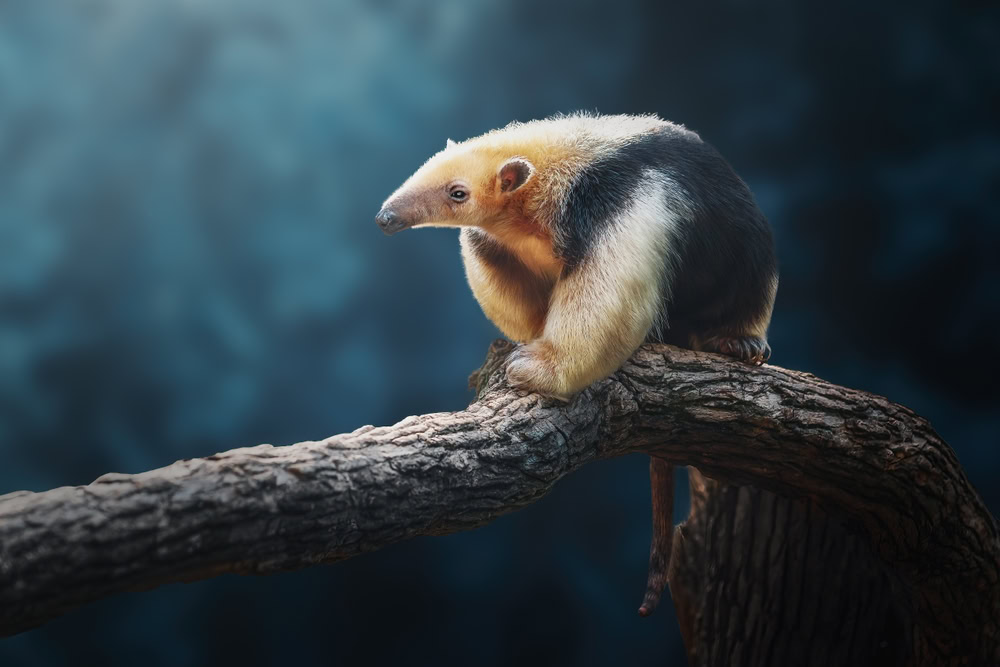VET APPROVED

The information is current and up-to-date in accordance with the latest veterinarian research.
Learn more »Click to Skip Ahead
Are you looking for something more exotic than the everyday cat or dog? Pet lovers looking for the ultimate ownership challenge will find no shortage of possibilities but must live in the right state.
Though you may not expect it, local laws may allow all kinds of offbeat creatures, offering unique life experiences and exceptional conversation starters for any lucky (and capable) owner. Discover how crazy pets can get by checking out this list of 10 unusual animals you can legally own in the US. Just keep in mind that just because it may be legal to own these animals, it doesn’t mean it’s always a good idea.

The 10 Unusual Pets That Are Legal to Own in the U.S.
1. Emu
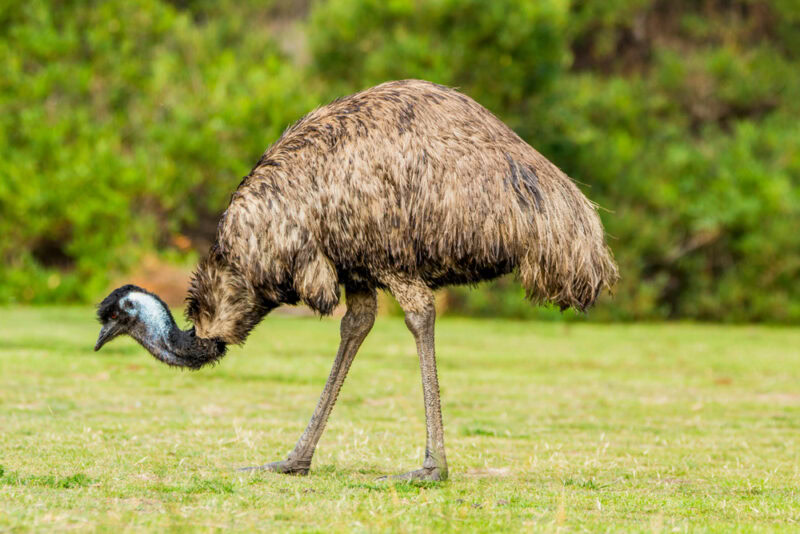
| Origin: | Australia |
| Lifespan: | Up to 35 years |
| Height: | 5–6 feet |
Emus are the second largest bird and are native to Australia. Though flightless, these majestic speedsters travel easily on long legs that allow them to run up to 30 mph. Emus can be kept in states throughout the U.S., but some states require permits while others don’t.
Emus need plenty of outdoor space to run around and can be relatively tame if raised by hand. Since they’re social creatures, many recommend keeping more than one. They provide a quality meat source when raised as livestock, but with a male and a female, you can also harvest eggs. One egg equals roughly the volume of a dozen chicken eggs, and the thick, colorful shell makes a magnificent medium for artists.
2. Zebras
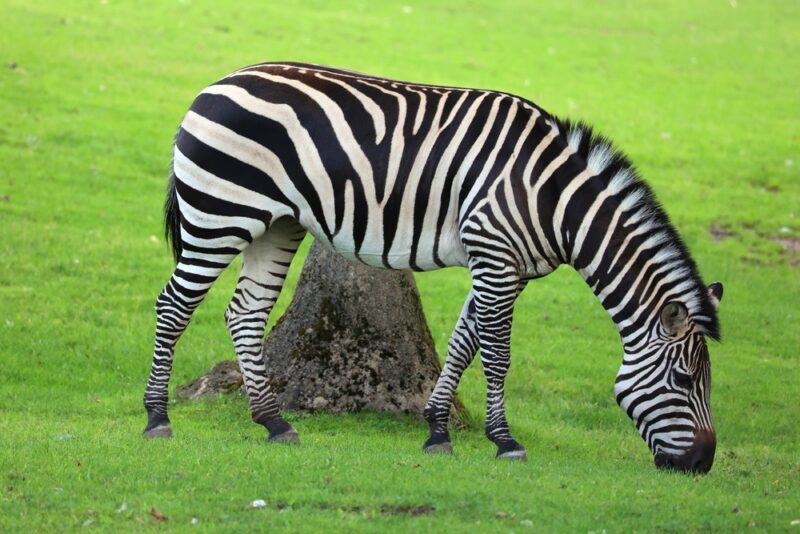
| Origin: | Eastern/southern Africa |
| Lifespan: | Up to 40 years |
| Height: | 4–5 feet (at shoulder) |
The zebra’s stripes may have several evolutionary purposes, including thermoregulation and pest deterrence, but they’re also a magnet for hopeful exotic pet owners. Surprisingly, zebras are only illegal in a few states, including New Hampshire. Some states that allow them require owners to obtain licenses and permits, while others are much less strict.
Though they may be relatively easy to acquire as pets compared to many other exotic species, zebras aren’t easy to own. They’re naturally aggressive and undomesticated, creating numerous training challenges and handling hazards. Their 3,000-pound kick can fend off and even kill a full-grown lion in the wild, making them much riskier than other legal exotic pets.
3. Llamas
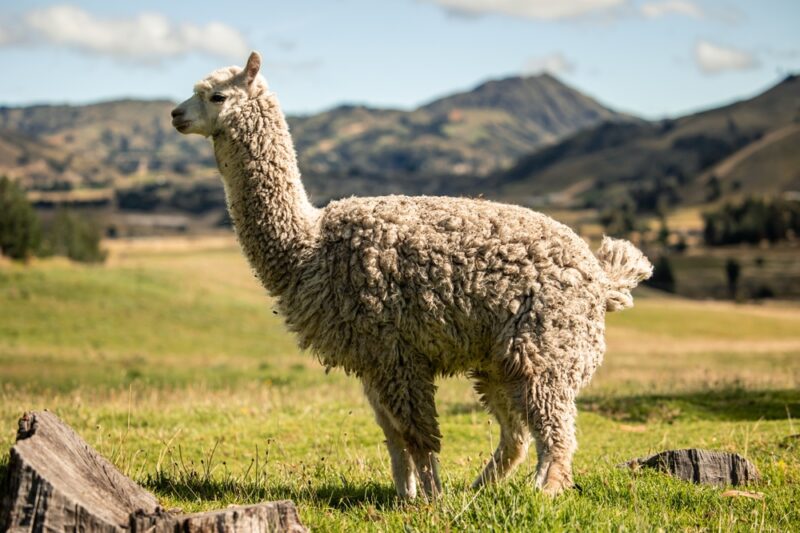
| Origin: | Andes Mountains of South America |
| Lifespan: | 15–25 years |
| Height: | 3–4 feet (at shoulder) |
Llamas aren’t only legal to own in most areas; they’re easy to find, too! There are breeders and rescues abound, offering avenues for owners with various lifestyles, needs, and budgets.
As one of the oldest domesticated animals worldwide, llamas make quality companions. After establishing trust, they typically engage with calm, social temperaments. Their gentle nature makes them great with kids and strangers, so you can even try turning some heads by taking them along to public events.
4. Camels
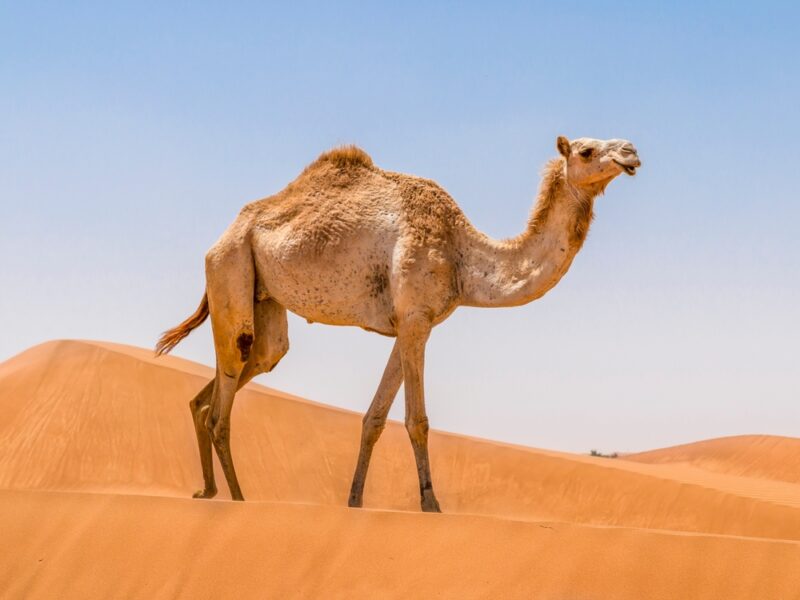
| Origin: | Asia and Africa |
| Lifespan: | 40–50 years |
| Height: | 7–11 feet (at shoulder) |
As another long-time domesticated yet unusual pet, camels are more expensive than llamas and possibly trickier to own. Camels need training along with adequate outdoor space and proper housing. Their stubborn nature can make this challenging for novice owners. Plus, their size adds a layer of risk if they lash out.
A well-raised camel can be an affectionate, social pet, offering many years of loyal companionship. Since they can live 50 years, you should do the math before adopting to ensure your pet doesn’t outlive you!
5. Sugar Glider
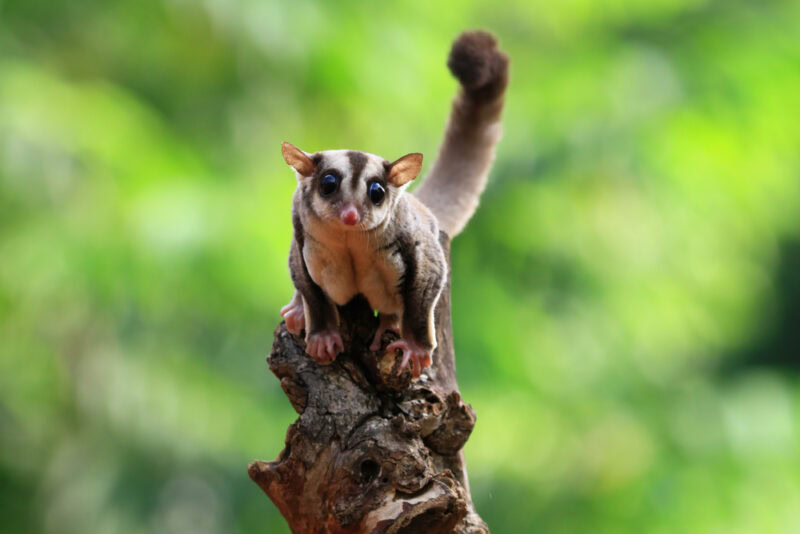
| Origin: | Australia, New Guinea |
| Lifespan: | 12-18 years |
| Height: | 5-12 inches |
Sugar gliders have become more and more popular as exotic pets not only due to their appearance but also to their ability to bond with their family. They require a large cage and proper nutrition and exercise. You’ll also want to check in with your local laws as some require that you obtain your sugar glider from specified breeders, while a few states have banned them completely.
6. Skunk
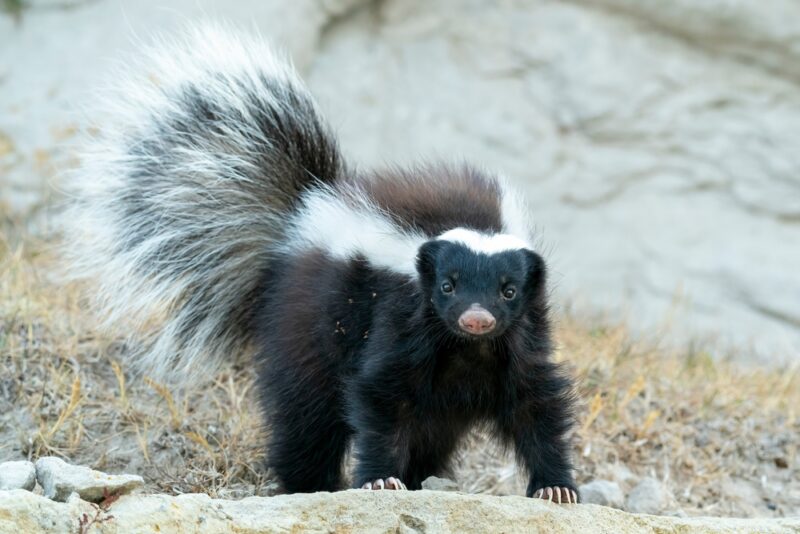
| Origin: | North America, South America |
| Lifespan: | up to 15 years |
| Height: | 6-9 inches (at shoulder) |
Though you may wonder why someone would want to, just know that owning a pet skunk is a possibility in some U.S. states. Most of these states require that a skunk be domesticated and some may require special permitting.
Skunks can be affectionate and loving, but they do require more maintenance than your more run of the mill pets, such as cats and dogs. Most owners will opt to have them descented as well.
7. Capybaras
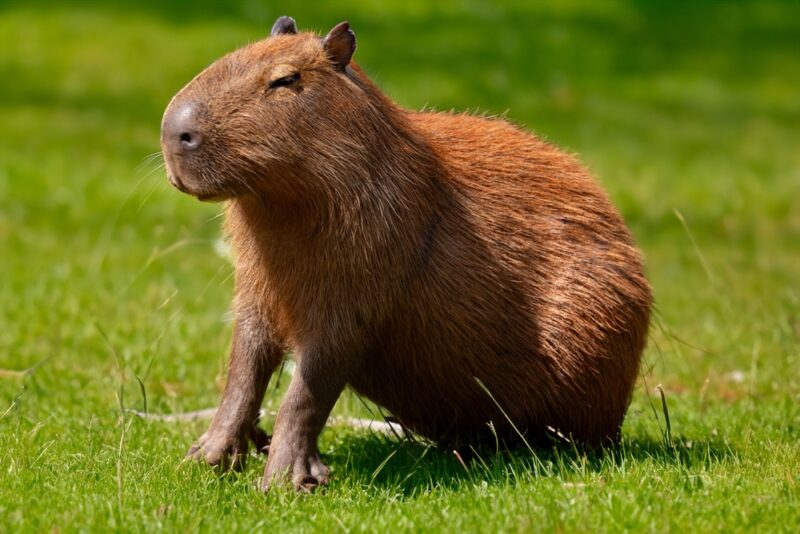
| Origin: | South America |
| Lifespan: | 10–12 years |
| Height: | 5–2 feet (at the shoulder) |
The capybara may be the world’s largest rodent, but these sweet-faced creatures could also be the cutest and most desirable for owners wanting a unique pet. While states like California and Georgia ban them as pets, many local governments allow them, though some require permits.
Capybaras can be an expensive investment. As social animals, they’re happiest when you get multiple capybaras, adding to the space, food, and features you’ll need to provide. A pool or marshy area is also critical for consistent hydration to prevent their skin from drying.
8. Serval
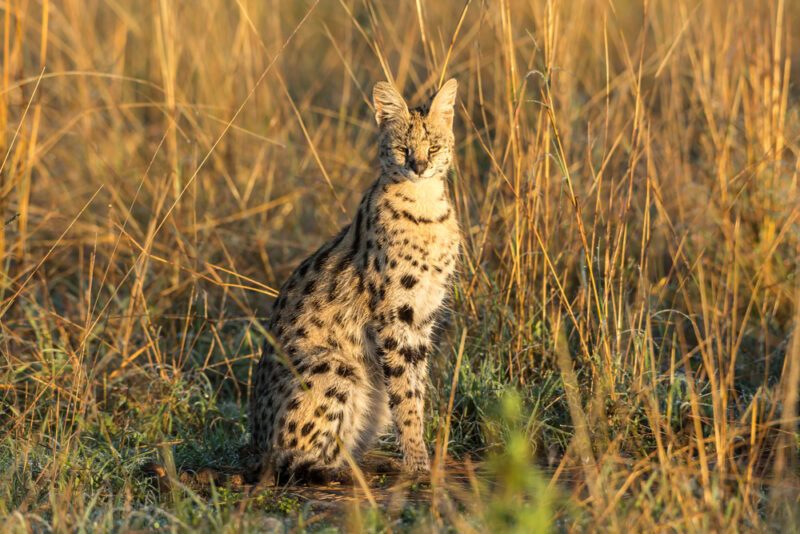
| Origin: | Africa |
| Lifespan: | Up to 20 years |
| Height: | 9–18 inches (at shoulder) |
While Savannah cats are among the most show-stopping domestic cats allowed in many states, feline fans may be happy to know they can also own a full-blown serval in some areas! The serval is the wild African cat parent of the Savannah, an energetic predator with a paw strike faster than any other large cat.
Servals are illegal to own in some states without a permit and 100% banned in others. States like Illinois, Montana, and Michigan allow them without many restrictions. Owners must provide significant space for these active nocturnal animals and a sturdy, well-built enclosure they can’t climb over or dig under.
9. Wallaroo
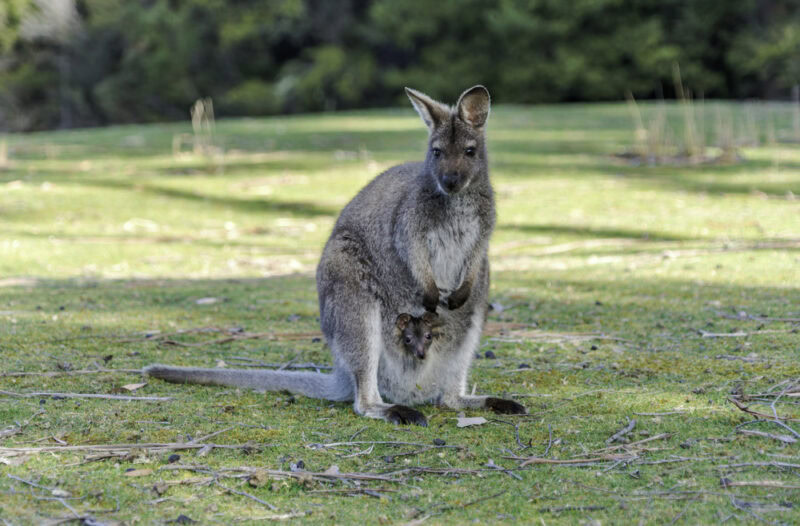
| Origin: | Australia |
| Lifespan: | 18–20 years |
| Height: | 32–58 inches |
Native to Australia, the wallaroo is sized between the larger kangaroo and the much smaller wallaby. The solitary animals inhabit several regions, ranging from the country’s rocky, mountainous terrain to its shrublands.
As pets, wallaroos can create difficulties due to being undomesticated and needing more space than the average backyard can provide if they want to hop around. Because of these difficulties, many states have banned the ownership of wallaroos, but special permitting will allow it in a few, such as Colorado.
10. Anteater
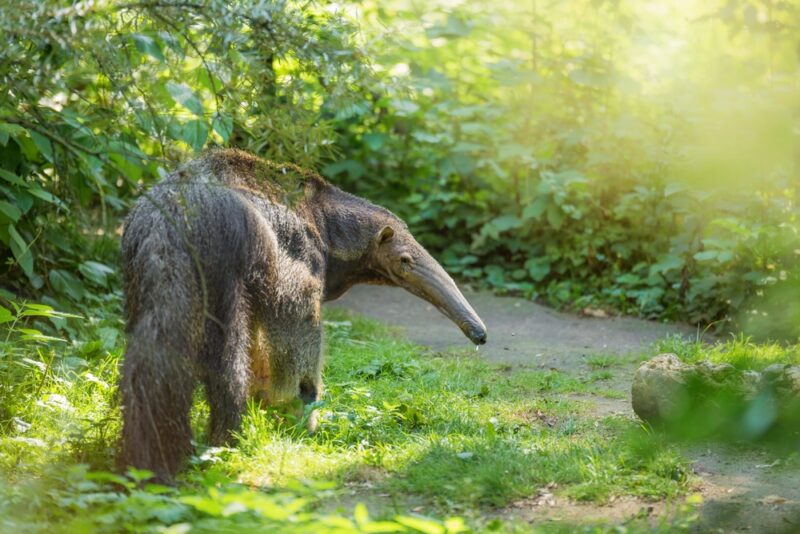
| Origin: | Central and South America |
| Lifespan: | up to 15 years |
| Height: | 2–3 feet or larger for some species |
Though they may not solve your pest problem, you’ll never have to worry about another dull day when you keep an anteater as a pet. There are four types of anteaters, ranging from tiny pygmies to massive giant anteaters. Many who own these long-snouted critters prefer the lesser anteater or tamandua.
Though relatively tame when hand-raised, anteaters present numerous challenges and concerns. They are capable climbers needing a sturdy enclosure to prevent escape, yet they can also be a damaging hazard indoors.
While they can be docile, anteaters are dangerous when threatened. Their sharp claws cause significant harm with one swipe, making them a poor choice for homes with young children or other pets. Moreover, the tamandua is one of the smelliest animals, with a skunk-like stink as a defense mechanism that can quickly fill the home.

What to Know Before Buying an Unusual Pet
Exotic pets may seem like a thrilling ownership challenge, but they can often be memorable for all the wrong reasons. Purchasing any unusual pet is usually expensive, costing over $2,000 in many cases, with the most expensive animals costing hundreds of thousands. Food and healthcare are comparatively costly, ranging from a few hundred to a few thousand dollars monthly.
Resources are generally challenging to provide consistently. Alongside the unique diets and vast land areas they require, you must also provide vet care. The average dog or cat doctor isn’t likely to offer exotic pet services, so you may have to travel long distances and pay exorbitant fees to give your animal the care they deserve.
Ethically, owning an exotic pet is often ill-advised. While many animals can thrive as pets, others suffer significantly shortened lifespans and have nowhere near the welfare they would have in the wild. Many are frequent targets of traffickers, and each sale promotes further exploitation.
Research is the key to avoiding many ownership troubles. Look into your desired pet’s lifestyle, feeding habits, and activity needs. Consider the interaction you want from a pet and which animals would be the best fit for your family. Owners must also investigate potential diseases their pets may carry and whether they can become an invasive species should they enter the wild. Of course, you should also check with your state and local regulations on whether your animal of choice is legal to keep or not.

Conclusion
If you’re ready to spice up your pet situation, all you need to do is check your local laws to see what’s legal and how to get the appropriate permits. However, legal ownership doesn’t always equal responsible ownership.
Animal welfare should be the top priority. While bringing one of these unusual pets home may be fun or fashionable, we must always consider ethical concerns to ensure we promote the health and happiness of the animals in our homes and those in the wild.
Featured Image Credit: Diego Grandi, Shutterstock
